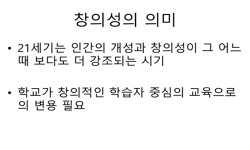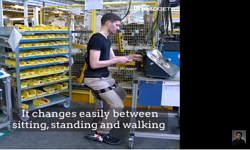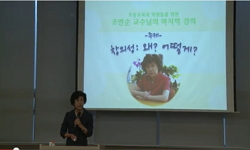In the future, there would happen various, complex and new problems. Hence it needs the ability which can solve the problems actively with applying suitable informations. The existing school education wants students to think convergently as matching o...
http://chineseinput.net/에서 pinyin(병음)방식으로 중국어를 변환할 수 있습니다.
변환된 중국어를 복사하여 사용하시면 됩니다.
- 中文 을 입력하시려면 zhongwen을 입력하시고 space를누르시면됩니다.
- 北京 을 입력하시려면 beijing을 입력하시고 space를 누르시면 됩니다.
초등과학과 수업에서 문제 중심학습이 창의성에 미치는 영향 = The effect of problem based learning on creativeness at elementary school science
한글로보기https://www.riss.kr/link?id=T11478105
- 저자
-
발행사항
전주: 전북대학교 교육대학원, 2008
-
학위논문사항
학위논문(석사) -- 전북대학교 교육대학원 교육대학원 , 교육학(교육방법) , 2008. 8
-
발행연도
2008
-
작성언어
한국어
- 주제어
-
DDC
370
-
발행국(도시)
전북특별자치도
-
기타서명
The effect of problem based learning on creativeness at elementary school science
-
형태사항
iv, 64 p: 삽도; 26 cm.
- 일반주기명
- 소장기관
-
0
상세조회 -
0
다운로드
부가정보
다국어 초록 (Multilingual Abstract)
In the future, there would happen various, complex and new problems. Hence it needs the ability which can solve the problems actively with applying suitable informations.
The existing school education wants students to think convergently as matching one answer to one question. But this present situation is weak to improve the ability for changes of future society. It is essential that divergent thinking approach the problems with various ways to solve it.
Hence in this study, it is used that science instruction which PBL(Problem Based Learning) with inhibited and creative thinking not convergent thinking in traditional method. And it will demonstrate the theory that this way can give the student to improve their creative thinking and creative trait or not.
The hypotheses of the study are as follows:
First, the group of PBL science class will improve creative thinking than group of general science class.
Second, the group of PBL science class will improve creative trait than group of general science class.
To verify this, experimental study is conducted. Students who live in Namwon and 5th grades were divided into one comparison group and one experimental group. PBL which is developed by researcher based on John R. Savery and Thomas M. Duffy's theory was applied to experimental group. This study
consists of pre-post hetero- group test, that contains 'creative thinking test ' and ' creative trait test ' .
The results are as follows:
First, students of experimental group made significant progress in creative thinking.
Second, students of experimental group made significant progress in creative trait.
In conclusion, PBL in science teaching gave positive effects on improving students' creative ability and self-control in learning and active participation when solving the problem independently.
목차 (Table of Contents)
- Ⅰ. 서론 = 1
- A. 연구의 필요성 및 목적 = 1
- B. 용어의 정의 = 3
- C. 연구 문제 = 4
- D. 연구의 제한점 = 5
- Ⅰ. 서론 = 1
- A. 연구의 필요성 및 목적 = 1
- B. 용어의 정의 = 3
- C. 연구 문제 = 4
- D. 연구의 제한점 = 5
- Ⅱ. 이론적 배경 = 6
- A. 문제 중심 학습 = 6
- B. 창의성 = 13
- C. 문제 중심학습과 창의성의 관계 = 17
- Ⅲ. 연구가설 설정 = 19
- Ⅳ. 연구방법 = 20
- A. 연구대상 = 20
- B. 실험설계 = 20
- C. 실험처치 = 21
- D. 검사도구 = 34
- E. 연구절차 = 35
- F. 결과처리 = 35
- Ⅴ. 결과 및 논의 = 36
- A. 창의성 사고요인의 변화 = 36
- B. 창의성 성향요인의 변화 = 37
- VI. 결론 및 제언 = 40
- A. 결론 = 40
- B. 제언 = 40
- 참고문헌 = 42
- 부록 1: 학습지 = 45
- 부록 2: 지도안 = 49
- 부록 3: 검사지 = 54
- 표 목차 = 12
- <표 1> 문제중심학습 전개과정 = 12
- <표 2> 실험설계 = 20
- <표 3> 실험처치된 과제내용 = 21
- <표 4> 문제 중심학습에 의한 과학과 수업 진행안 모형 = 23
- <표 5>문제 중심학습의 단계별 교사와 학생의 활동 예시 = 24
- <표 6> 문제 및 학습목표, 학습지도내용 1 = 28
- <표 7> 문제 및 학습목표, 학습지도내용 2 = 28
- <표 8> 문제 및 학습목표, 학습지도내용 3 = 29
- <표 9> 문제 및 학습목표, 학습지도내용 4 = 29
- <표 10> 문제 및 학습목표, 학습지도내용 5 = 30
- <표 11> 문제 및 학습목표, 학습지도내용 6 = 30
- <표 12> 문제 및 학습목표, 학습지도내용 7 = 31
- <표 13> 문제 및 학습목표, 학습지도내용 8 = 31
- <표 14> 문제 및 학습목표, 학습지도내용 9 = 32
- <표 15> 문제 및 학습목표, 학습지도내용 10 = 32
- <표 16> 창의성사고요인 검사 점수에 대한 집단 간 차이검증 결과 = 36
- <표 17> 창의성사고요인 검사 점수에 대한 집단 간 차이검증 결과 = 38












